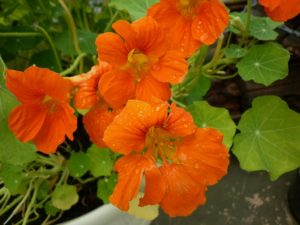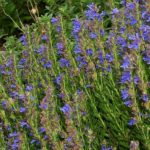Capuchin – Description, Beneficial features, Landing and care
 The Capuchin flower or, in other words, Nasturtium is a perennial herbaceous plant that we grow as an annual, with powerful branching and wattle-like stems. Capuchin flowers have a wide variety of colors and shapes, from the simplest to terry. Flowers differ not only in shape and color, but also in aroma.
The Capuchin flower or, in other words, Nasturtium is a perennial herbaceous plant that we grow as an annual, with powerful branching and wattle-like stems. Capuchin flowers have a wide variety of colors and shapes, from the simplest to terry. Flowers differ not only in shape and color, but also in aroma.
Capuchin blooms abundantly on soils with good drainage, with an excess of fertilizers, the plant forms more leaves than flowers.
Description
Capuchin has a juicy thick erect stem up to 2 meters long, creeping or curly. The leaves are alternate, usually lobed with a wax coating. The flowers are composed of five petals, bright, with a delicate pleasant aroma, often yellow, orange or red. Capuchin blooms profusely from June and almost before the onset of cold weather.
Capuchin will successfully fit into any composition and style, and besides, she is unpretentious, elegant and graceful, ready to please the owner with a long flowering. Curly capuchin is well suited for vertical gardening, for example, you can decorate a gazebo or arrange a gazebo. Dwarfs are planted in the foreground in flower beds, grown in pots or along the edge of the border. Creeping species are original on flowerbeds and in containers. A capuchin planted in a greenhouse with tomatoes will scare off the whitefly.
Beneficial features
Leaves are consumed fresh as an additive to summer salads, as a seasoning for main dishes. Finely chopped flowers will give a spicy and sweet taste to cold snacks, salads, side dishes, and unripe fruits are added as a spice when pickling and pickling cucumbers, squash, cabbage.
Capuchin fruits completely replace capers – an expensive delicacy. For this, the fruits are blanched for 6-8 minutes, and then laid out in jars, poured with marinade – 2 tablespoons of salt and 2 tablespoons of sugar and 30g of 9% vinegar per liter of water and rolled up.
Landing and care
Growing capuchin in the garden is not at all difficult, guided by basic knowledge about the plant. Capuchin grows well in sunny areas, in the shade it takes on a miserable appearance with thin shoots and hardly blooms. It does not tolerate transplanting, so seeds for seedlings are best sown in peat pots. Sowing is carried out at home in April, and after passing the threat of frost, seedlings are planted in open ground.
You can carefully dig out the capuchin with a lump of earth at the end of the season, cut it, transplant it into a pot and transfer it to the apartment for the winter. In this case, the plant will successfully survive until the next season.
Capuchin is not only a beautiful flower, it is successfully consumed as food. All parts of the plant are quite edible, with a pleasant spicy taste, similar to the taste of watercress and very useful. They contain essential oil, the antibiotic tropeolin, vitamin C, flavonoids, glucosides and other beneficial substances.



























